Search
Remove Ads
Advertisement
Summary 
Loading AI-generated summary based on World History Encyclopedia articles ...
Search Results

Definition
Greek Alphabet
The Greek Alphabet developed from the Phoenician script at some point around the 8th century BCE. The earlier Mycenaean Linear B script, used primarily for lists and inventories, had been lost during the Greek Dark Age, and the technology...
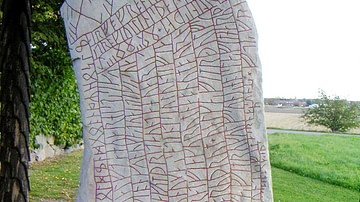
Definition
Runes
Runes are letters in the runic alphabets of Germanic-speaking peoples, written and read most prominently from at least c. 160 CE onwards in Scandinavia in the Elder Futhark script (until c. 700 CE) and the Younger Futhark - which illuminated...

Definition
Alphabet
The history of the alphabet started in ancient Egypt. By 2700 BCE Egyptian writing had a set of some 22 hieroglyphs to represent syllables that begin with a single consonant of their language, plus a vowel (or no vowel) to be supplied by...
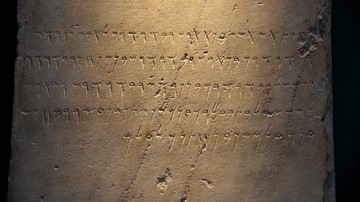
Article
The Phoenician Alphabet & Language
Phoenician is a Canaanite language closely related to Hebrew. Very little is known about the Canaanite language, except what can be gathered from the El-Amarna letters written by Canaanite kings to Pharaohs Amenhopis III (1402 - 1364 BCE...
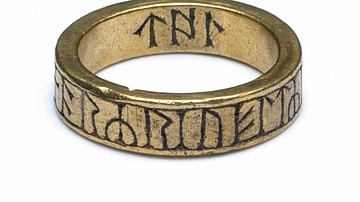
Image
Ring with Runic Inscription
Gold finger-ring, engraved with a runic inscription, three letters continuing on inside of the hoop, found near Carlisle, England, dated to the 8th-10th century.
The British Museum, London
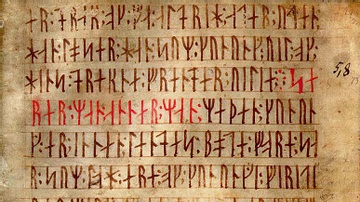
Image
Codex Runicus, Runic Manuscript
The Codex Runicus (AM 28 8vo), a manuscript from c. 1300 CE, contains one of the oldest texts of the Scanian Law (Skånske lov), here written exclusively in the Medieval Futhork runic script. It resides at the University of Copenhagen in...

Video
How Korea crafted a better alphabet - History of Writing Systems #11 (Featural Alphabet)
The Korean alphabet is better than yours. Meet the king who invented it and watch him work his linguistic magic in this chapter in the history of writing. You wake up in another palace. This time you're in Korea. The first face to greet...

Video
Jelling Mounds, Runic Stones and Church (UNESCO/NHK)
The Jelling burial mounds and one of the runic stones are striking examples of pagan Nordic culture, while the other runic stone and the church illustrate the Christianization of the Danish people towards the middle of the 10th century A.D...
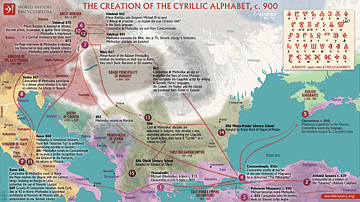
Image
The Creation of the Cyrillic Alphabet, c. 900
A map illustrating the journeys of the brothers Cyril and Methodius, two 9th-century Christian missionaries, that shaped the cultural and linguistic landscape of Central and Eastern Europe. Commissioned by the Byzantine Emperor Michael III...

Image
Phoenician Alphabet
The Phoenician alphabet.